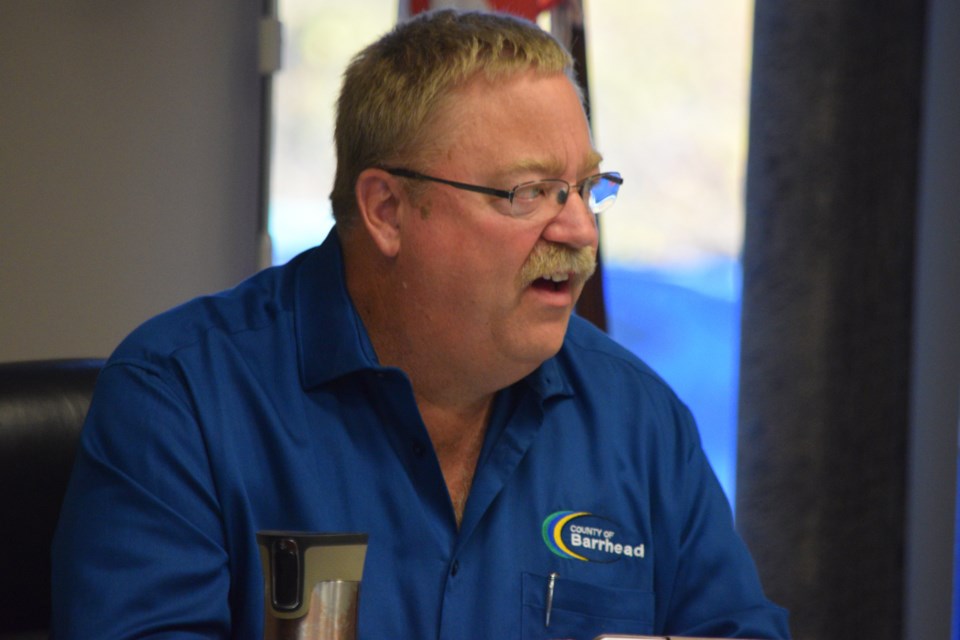BARRHEAD-For the most part, the fees the County of Barrhead charges its residents will remain the same.
On April 6, councillors unanimously approved Bylaw 12-2020 (Rates and Fees Bylaw) in three straight readings.
County manager Debbie Oyarzun said previously the fees they charge for services was part of a schedule, but the administration felt it was better suited as a bylaw and changed it to a bylaw last year.
For the most part, she said most of the fees remained unchanged and the changes in converting the fee and rate schedule into a bylaw were of the housekeeping variety.
"Department heads look at [the fee schedule] annually and make recommendations to council during budget discussions, before making a final recommendation as a bylaw," Oyarzun said.
The one notable exception was an increase in the county's private dust control program from $1.00 a linear foot to $1.50.
Oyarzun said the increase is in step with the county's efforts in recent years to get closer to a cost-recovery model for its services.
Coun. Walter Preugschas asked for clarification on the county's fire service fee schedule, specifically asking who would be responsible for paying the costs of fighting a fire on private unimproved lands.
He noted that there was the potential, in the case of a wildfire, that the landowner and/or the county could face a large firefighting bill.
"Currently, we have a cap of $3,000 per response," Oyarzun said, noting it is always the landowner who is responsible.
The municipality capped invoices for fire services as the council at the time believed $3,000 was the amount most landowners' insurance would cover.
Anything above that is the municipality's responsibility, Oyarzun said.
There is one exception to this cap when the fire response is due to a fire that was started in contravention of a municipal bylaw or provincial law or a fire control order. In those cases, along with mutual aid requests, the invoice will be that of the actual costs the municipality incurs.
"The challenge with vacant bushland is the availability of insurance," she said.
Administrative assistant Pam Dodds made several inquires at local insurance companies about unimproved land. The responses she received were all over the map in regards to how much could be insured if a property or quarter needed a residence to be eligible for insurance.
"At the end of the day from the county's perspective, it is the landowner's responsibility to pay up to the maximum of $3,000," Oyarzun said, noting that is why the municipality has a specific fire services reserve to tap into if needed.
Coun. Marvin Schatz suggested the county needed to take a second look at its fire services billing policy, suggesting they shouldn't necessarily cap the amount they charge residents.
If a resident's policy covers up to $50,000, Schatz said why should the county arbitrarily cap the amount they invoice if the cost of fighting a fire was more than that.
"If we don't, we are just leaving money on the table," he said, adding the current policy could potentially limit how much they can collect from insurance companies.
Oyazun agreed, adding administration realizes there are shortfalls in the policy. That is why administration plans to bring a revised Fire Protection Service Charges policy for council's consideration before the end of the year.
Dodds interjected that one insurance company she talked to stated they capped their fire coverage policies of people living in the county because the municipality would arbitrarily cover up to $3,000.
Reeve Doug Drozd noted that during his time on council they did not always have the $3,000 cap in place, saying at one time the policy was to invoice residents' as much as their insurance covered.
"The philosophy when I first joined council was that we would take whatever the insurance policy would give us," he said. "I can't remember the rationale on why we lowered it. I guess we felt sorry for people and wanted to give them a break."
Barry Kerton, TownandCountryToday.com


